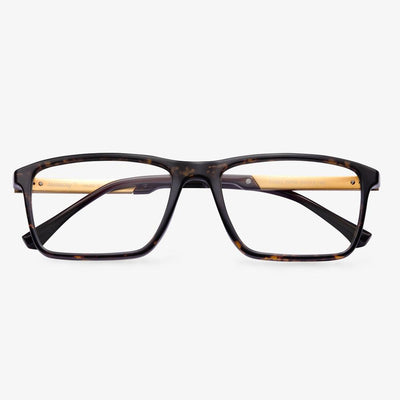What is the bifocal lens?
Bifocal reading glasses are characterized by distance vision correction in the upper part of the lens and near vision correction at the bottom. If you need help with both, that's great. This lens is designed to facilitate the working of reading glasses and standard prescription glasses, all in one frame. Glasses are recommended when you are diagnosed with presbyopia, and bifocals are usually the first choice. But for intermediate vision, bifocals are difficult because they're not close enough for the reading part of the lens, and they're not far enough away for the distance part of the lens. Bifocal sunglasses have no magnification at the top, and the reading ability is at the bottom of the lens. Bifocal reading glasses can be found anywhere reading glasses are sold, but they can be harder to find than full magnifying lenses.
When should I use blue light glasses?
Most of us spend a few hours a day in front of a screen. Because so many people work on a computer all day, many people wear blue glasses in the office. At the same time, many American high school and college students spend hours a day on their computers and could benefit from blue light glasses.
Lens anti-fogging agent
To be specific, a layer of the anti-fogging agent is sprayed (coated) on the surface of the lens to form a dense, absorbent, ultra-thin, and ultra-transparent biological coating. The coating chelates the droplets inside the coating (chelating means processing the material into a digestible form) to form a continuous and supper transparent chelating coating, which converts the droplets into a transparent micro-glass layer, thus preventing fogging. Spray anti-fogging agent on the surface of the lens, and then wipe evenly with an ordinary lens cloth. It can be used on most lenses. They are easy to use but have relatively short anti-fogging time. During use, the lens should not be wiped or washed. Long time use will affect the lens life.
Sunglasses
Sunglasses have a visible light transmittance of about 20% and can absorb ultraviolet and infrared rays well. It also has a variety of colors such as light green, light gray, light brown, etc., used to protect in different occasions. Among them, light gray lenses have little effect on color recognition. Light brown glasses make the blue sky look darker and reduce the transmission of green light. Light green lenses reduce the transmission of red light.
Sunglasses not only have a wide range of varieties, but with the improvement of decoration and health care effects, their scope of use has become more extensive. As the time to update sunglasses can be rapid, fashionable men and women would love to have multiple sunglasses to match clothes to satisfy their pursuit of fashion.
Shopping Skills of Blue Light Blocking Glasses
Some shop assistants recommend green-blue light-blocking glasses, explaining that the principle of tinting lenses is different and that you should be careful because green can not really block blue rays. There are blue-light-blocking glasses that are blue. And this belongs to blue light protection with no background color, which can not completely prevent blue light into the eye, usually only 20% to 30%.
What color coating is good?
The purpose of plating anti-reflection film is to reduce the reflection of light. But because it is impossible to be completely free of reflected light, there will always be some residual reflection on the surface of the lens that causes the visible color. Someone asks which kind of these residual color is best. It does not have a standard actually. It is mainly based on a personal preference for color. More on the market at present is green color. However, these residual colors can initially help us to judge the thickness of the film: when the film is thin (the thickness is less than 139nm), the reflected light will show light yellow, and when the film is thick (the thickness is more than 139nm), it will show blue-green. The current multi-layer anti-reflection film thickness is about 0.3μm.
What Is Bifocal Lens?
Changes in vision seem to be related to age. Presbyopia, a common eye condition that occurs in middle age, causes changes in your eye’s ability to focus. But this condition can be corrected by wearing bifocal glasses.
Bifocal lenses are divided into two parts to accommodate two different prescriptions in one lens. One area of the lens will have one prescription (usually distance) and a segment in the lower half will have the other (usually near vision).
The bifocal glasses were invented by Benjamin Franklin, who solved his own vision problem by taking the lens from his reading glasses and distance glasses and cutting them in half. Then remade the cut lenses into a single pair of bifocals and put the distance lens on top and the reading lens on the bottom.











































